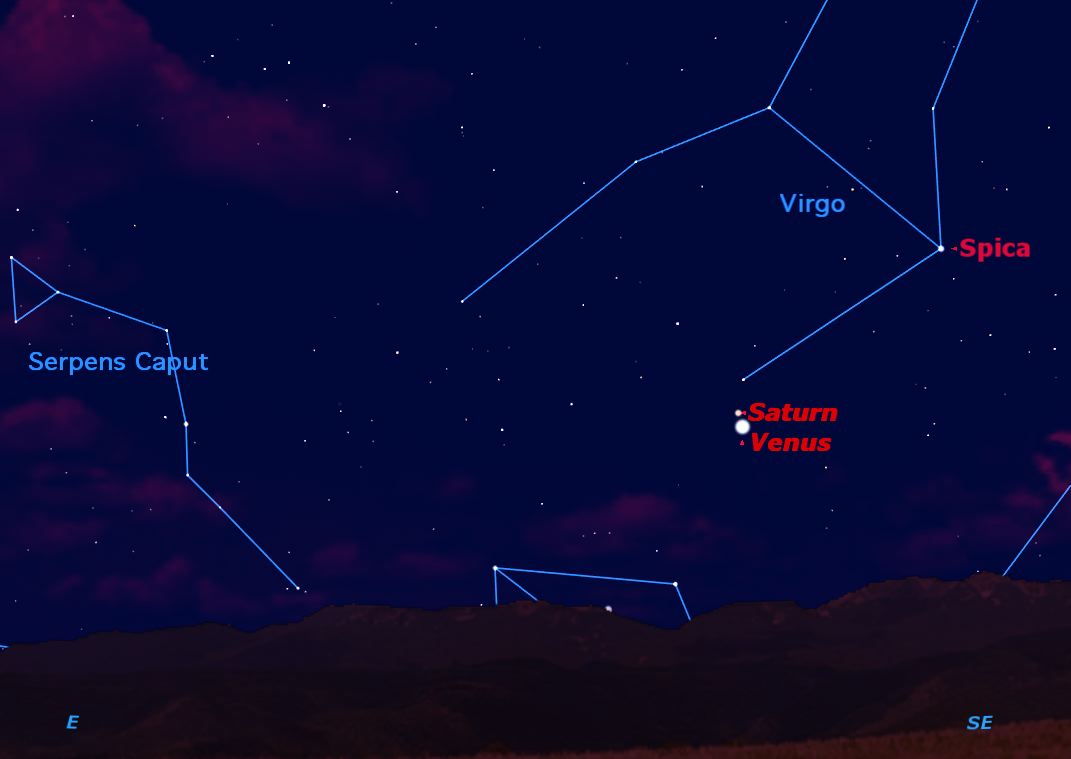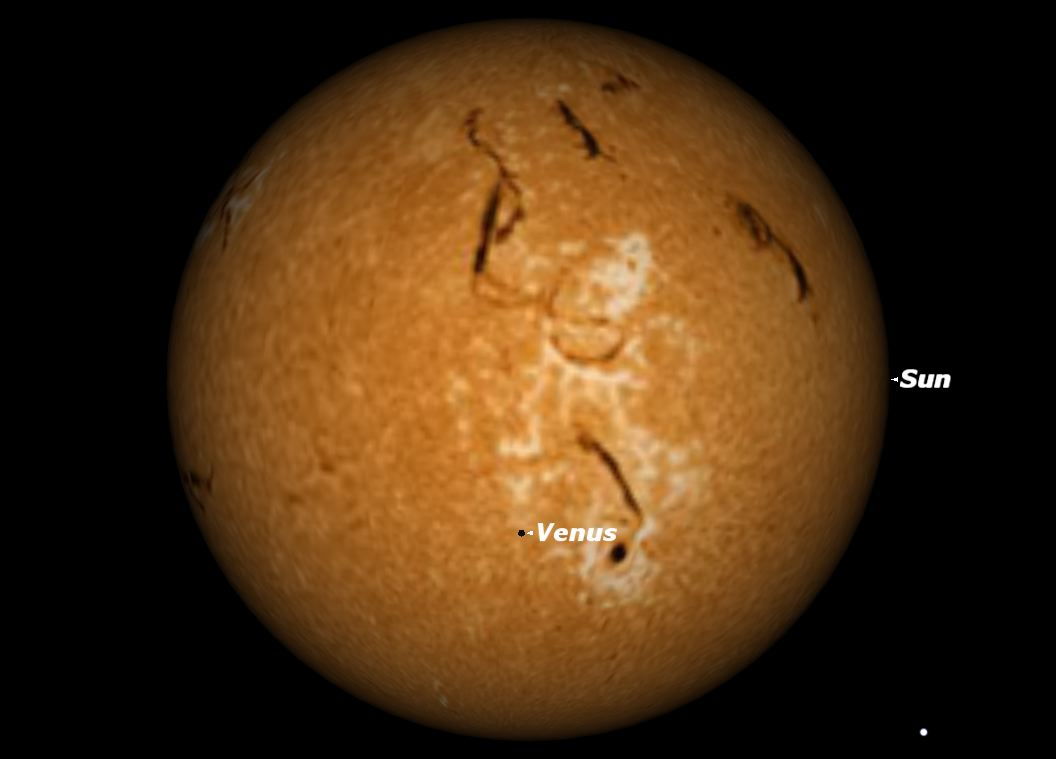Saturn Meets Venus in Dawn Sky This Week

For the last month or two, the planet Saturn has been on the far side of the sun, but emerges this week at dawn right next to the brilliant planet Venus.
Most of the planets appear to move from west to east against the background stars: right to left in the Northern Hemisphere and left to right in the Southern Hemisphere. Things are a little bit different when we are referring to rising planets in the dawn sky, relative to the point of sunrise.
In this case, both Venus and Saturn are on the far side of the sun, viewed from the moving planet Earth. The result is that Saturn appears to be moving away from the sun while Venus appears to be moving towards the sun. The two planets will appear to pass on the morning of Tuesday, Nov. 27, when they will be separated by about the width of the moon.
On Tuesday morning, the two planets will fit within a low-power telescope field, providing a striking visual contrast. [Dazzling Venus Views from Earth (Photos)]
Venus is close to the sun and close to us, which combine to make it very bright. Saturn is far from the sun and far from Earth, combining to make it appear very dim in contrast to brilliant Venus.
Venus is a bright but featureless white gibbous shape, 87-percent illuminated, like a miniature version of the moon when it is four days past full, while Saturn is girdled by its famous rings.
Although Venus is much closer to us than Saturn, 1.4 astronomical units away (130 million miles, or 209 million kilometers), as compared to Saturn at 10.6 astronomical units (985 million miles, or 1.5 billion km), the two appear almost the same size in the telescope, because Saturn is a much larger planet than Venus.
Get the Space.com Newsletter
Breaking space news, the latest updates on rocket launches, skywatching events and more!
This juxtaposition of Saturn and Venus in the sky is what astronomers call a conjunction, a fairly common event. It also forms a three-object alignment: Saturn, Venus, and Earth fall very close to a straight line.
There will be an even closer alignment of three solar system bodies on Dec. 21 this year. This is not the alignment you may have heard of associated with the 2012 Mayan apocalypse hoax.
On Dec. 21, there will be a transit of Venus visible only from the planet Saturn. Like the transit of Venus visible from Earth earlier this year, the planet Venus will appear to cross the face of he sun, but you would have to be near Saturn to see it. This is another three-object alignment: sun, Venus, and Saturn.

There are, of course, no humans anywhere near Saturn, but there is a sophisticated probe named Cassini in orbit around Saturn, and astronomers plan to use Cassini to observe this transit.
As to that other "planetary alignment" predicted for Dec. 21, supposedly involving all 8 planets, that is quite simply impossible. In fact, all 8 planets have never aligned, not even once, in the entire 4 billion plus years that the solar system has existed.
Because the changing positions of Saturn and Venus will make an interesting dance in the predawn sky, plan on observing a few mornings before and after the date of closest approach on Nov. 27. This is an excellent photo opportunity, and we will welcome your pictures of this event.
Editor's note: If you snap an amazing photo of Saturn and Venus, or any other night sky view, and you'd like to share for a possible story or image gallery, send images, comments and observing location information to managing editor Tariq Malik at tmalik@space.com.
This article was provided to SPACE.com by Starry Night Education, the leader in space science curriculum solutions. Follow Starry Night on Twitter @StarryNightEdu.
Join our Space Forums to keep talking space on the latest missions, night sky and more! And if you have a news tip, correction or comment, let us know at: community@space.com.

Geoff Gaherty was Space.com's Night Sky columnist and in partnership with Starry Night software and a dedicated amateur astronomer who sought to share the wonders of the night sky with the world. Based in Canada, Geoff studied mathematics and physics at McGill University and earned a Ph.D. in anthropology from the University of Toronto, all while pursuing a passion for the night sky and serving as an astronomy communicator. He credited a partial solar eclipse observed in 1946 (at age 5) and his 1957 sighting of the Comet Arend-Roland as a teenager for sparking his interest in amateur astronomy. In 2008, Geoff won the Chant Medal from the Royal Astronomical Society of Canada, an award given to a Canadian amateur astronomer in recognition of their lifetime achievements. Sadly, Geoff passed away July 7, 2016 due to complications from a kidney transplant, but his legacy continues at Starry Night.









